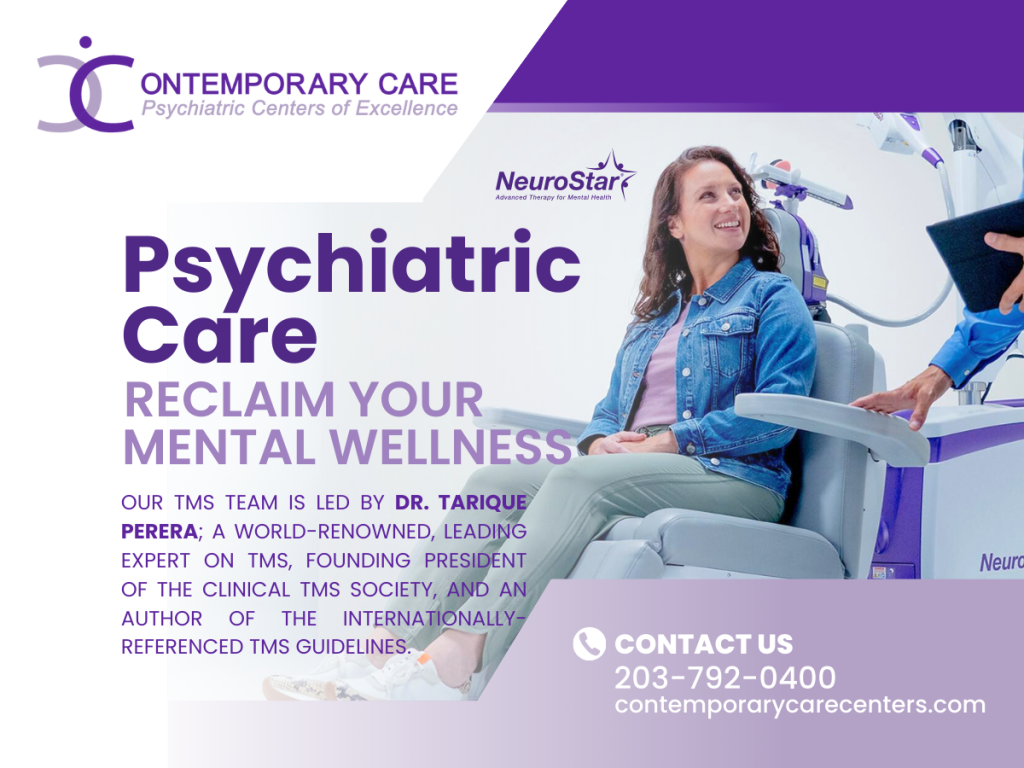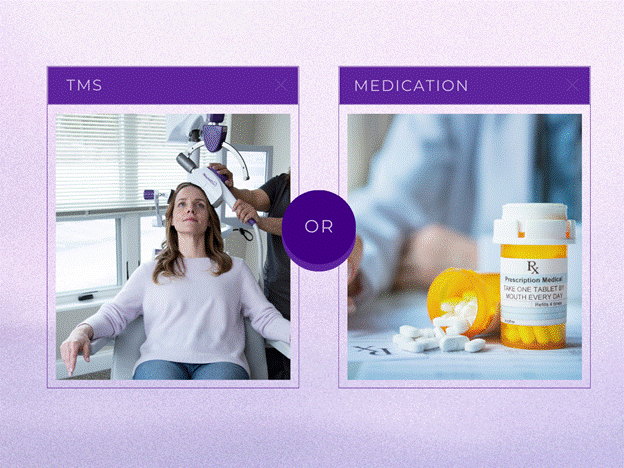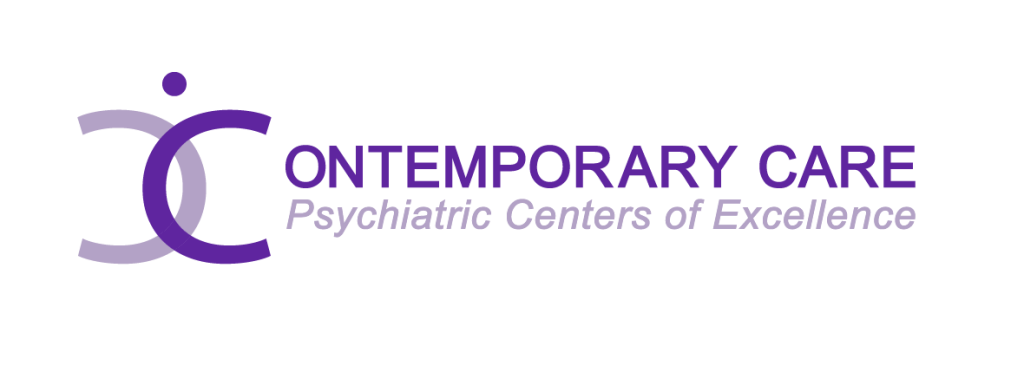TMS or Medication: Best Treatment for OCD – Transcranial Magnetic Stimulation (TMS) provides optimism for people dealing with Obsessive-Compulsive Disorder (OCD) who haven’t experienced improvement with standard treatments. Although methods like exposure and response prevention therapy, along with medication, support approximately 70% of individuals with OCD, a notable portion still grapples with symptoms.
TMS, a non-intrusive technique involving magnetic pulses directed at specific brain regions, has moved beyond experimental stages to become a recognized treatment option. This offers an alternative avenue for the remaining 30% who haven’t seen satisfactory results with conventional approaches.
Transcranial Magnetic Stimulation (TMS) is gaining popularity due to its ease of access and non-invasive nature, making it appealing to individuals who are wary of surgical procedures. Its widespread availability in local TMS clinics throughout the United States has piqued the interest of those suffering from Obsessive-Compulsive Disorder (OCD) and is also used to lower depression symptoms, leading many to approach it as a possible solution.
However, it is essential to consult with healthcare professionals to assess its suitability for each individual, taking into account factors like the severity of symptoms and past treatment experiences. This ensures that informed decisions are made regarding the use of the best TMS therapy as a treatment for OCD.
What Is Transcranial Magnetic Stimulation (TMS)?
Transcranial Magnetic Stimulation (TMS) is a non-invasive procedure used in the treatment of depression and other neurological disorders. It involves the use of magnetic fields to stimulate nerve cells in the brain.
Mechanism of Action
During a TMS treatment, a device called an electromagnet produces a magnetic pulse. This pulse travels through the skull and targets particular areas of the brain. It delicately stimulates nerve cells that have been impacted by depression. The purpose is to activate parts of the brain that are less active in people experiencing depression.
Brain Activation and Mood Improvement
The main aim of the best TMS therapy is to change the activity of specific parts of the brain that control mood. By making these areas more active, TMS seeks to reduce symptoms of depression and make a person feel better overall.
Remission of Depressive Symptoms
Although we don’t fully understand why repetitive Transcranial Magnetic Stimulation works, it’s thought to cause changes in the brain’s ability to reorganize and create new neural connections, a process called neuroplasticity. By undergoing multiple sessions of rTMS, these changes in the brain might help alleviate depressive symptoms and lead to improvement over time.
Evolution of TMS Techniques
As we learn more about TMS, researchers are working to improve and perfect its protocols. They are investigating various techniques and factors like how strong the stimulation is, how often it’s applied, and where in the brain it’s targeted. This research aims to make the best TMS therapy treatments more effective.
Types of TMS Protocols
There are various types of the best TMS therapy protocols used in clinical trials, each with its own set of parameters and objectives. These protocols may include:
- High-Frequency TMS: Involves delivering multiple magnetic pulses per second to stimulate cortical excitability.
- Low-Frequency TMS: Utilizes a lower frequency of magnetic pulses to inhibit cortical excitability.
- Theta Burst Stimulation (TBS): A newer TMS protocol that delivers bursts of TMS pulses at a specific frequency, believed to induce more rapid and potent neuroplastic changes.
Why Is TMS Used?
Transcranial Magnetic Stimulation (TMS) shows promise in treating depression, especially when standard therapies like counseling or medication don’t work. Depression significantly impacts mood, thoughts, and daily functioning for many people. While counseling and medication often help control symptoms, some individuals don’t respond to these approaches.
The best TMS therapy offers a non-invasive option by focusing on the brain’s neural circuits associated with depression. It sends magnetic pulses to specific brain areas, such as the prefrontal cortex, which regulates mood. These pulses stimulate electrical currents, altering neuronal activity and encouraging neuroplasticity, the brain’s ability to reorganize.
One benefit of the best TMS therapy is its precise targeting, which lowers the risk of systemic side effects common with medications. Unlike drugs that affect the whole body, TMS primarily influences targeted brain regions, reducing negative reactions.
Furthermore, TMS is generally well-tolerated by most patients and doesn’t require anesthesia or cause seizures like electroconvulsive therapy (ECT). This makes it more convenient and patient-friendly.
Research studies and real-life experiences support the effectiveness of TMS in depression treatment, with many individuals reporting improved mood and overall well-being. TMS offers hope for those with treatment-resistant depression, presenting a focused and non-invasive alternative when conventional treatments prove ineffective.
Efficacy Of TMS For OCD:
The data shows some important percentages. First, the initial response rate is 72.6%, meaning a large number of patients show positive outcomes right from the start. Second, the sustained response rate of repetitive TMS is 52.4%, showing that many patients continue to have positive outcomes over time.
Lastly, for patients who got YBOCS scores after 29 dTMS sessions, the response rate was 57.9%, which emphasizes how effective this treatment is in producing good results.
Are All TMS Procedures Similar?
Transcranial Magnetic Stimulation (TMS) is a procedure used without surgery, gaining recognition for treating various neurological and psychiatric conditions, mainly depression. But, all TMS treatments aren’t identical. Variations in tools, methods, and approaches can influence how well they work and if they’re right for different people. Let’s look at different types of the best TMS therapy procedures and see how they differ.
Types of TMS Procedures:
Surface TMS (rTMS):
1- NeuroStar:
NeuroStar, a leading provider of the best TMS therapy machines that are FDA-approved, uses a method called Surface TMS. This technique involves stimulating the outer layer of the brain, known as the cortex, using magnetic pulses. During each session, the machine delivers these pulses at a rate of 10 times per second (10 Hz) for 37.5 minutes.
2- Deep TMS (dTMS):
Brainsway’s deep TMS treatment machines assert that they can access deeper brain structures for better brain stimulation compared to NeuroStar. However, while this claim is based on theoretical assumptions, the effectiveness and potential side effects of dTMS are still being carefully examined and evaluated.
3- Neuronavigation TMS (fMRI TMS):
Some clinics use functional MRI to help position the TMS coil more accurately, intending to target specific brain parts. However, whether this approach is more effective than traditional methods is uncertain and subject to debate.
4- Theta Burst Stimulation (Express TMS):
Transcranial Magnetic Stimulation (TMS) or Theta Burst Stimulation (TBS) is a novel method that pulses at a frequency resembling brainwaves, encouraging neuroplasticity. With sessions lasting just 3 minutes, it provides a quicker option compared to conventional TMS.
5- Multipulse TMS and Paired-pulse TMS:
These different methods include sending numerous pulses at varying frequencies, aiming at particular brain areas or functions. They provide adaptability in tailoring treatments to suit individual requirements.
6- Accelerated TMS
Accelerated TMS, pioneered by The best TMS therapy Institute in March 2022, condenses 50 sessions into 5 days, with 10 sessions per day. Using theta burst stimulation (TBS), comparable to Express TMS, it has attracted patients from the US and Canada, with impressive outcomes showing 75-85% reporting significant improvements lasting 4-6 weeks post-treatment.
Which IS The Best TMS Therapy?
Effectiveness:
Research indicates that different Transcranial Magnetic Stimulation (TMS) procedures show varying levels of effectiveness for different mental health conditions. Deep Transcranial Magnetic Stimulation (dTMS) is believed to stimulate a broader area of the brain. However, Surface Transcranial Magnetic Stimulation (rTMS) is typically preferred because it is associated with fewer reported side effects and instills greater confidence in patients.
Treatment Duration:
TMS is notable for its notably shorter treatment time, completing sessions in just a few minutes compared to traditional TMS, which can take up to 45 minutes.
Precision and Personalization:
Neuro Navigated Transcranial Magnetic Stimulation (TMS) strives for accuracy in positioning the coil, which could improve the effectiveness of targeted treatment. Nevertheless, the importance and cost-effectiveness of MRI-guided techniques are uncertain.
Neuroplasticity Enhancement:
Theta Burst Stimulation (TBS) is a newer and more advanced method compared to traditional Transcranial Magnetic Stimulation (TMS). It is designed to promote neuroplasticity, which is the brain’s ability to reorganize and form new connections, more effectively.
TBS achieves this by delivering rapid bursts of stimulation that mimic natural brainwave patterns. This approach holds the promise of providing improved therapeutic benefits for individuals undergoing treatment.

TMS Therapy Near Me: Best TMS Therapy CT
Transcranial Magnetic Stimulation TMS therapy is changing how we treat mental health issues, providing optimism and comfort to individuals dealing with conditions such as depression, anxiety, OCD, and others.
For a thorough understanding of effective treatments for obsessive-compulsive disorder (OCD), you might want to check out the resources provided by Contemporary Care Centers (CCC). Their website, www.contemporarycarecenters.com, has plenty of helpful information on different mental health issues, including therapy choices designed to help with bipolar disorder. Take advantage of the expertise of the professionals at CCC to gain a better grasp of the specialized therapy sessions aimed at managing the issue.




